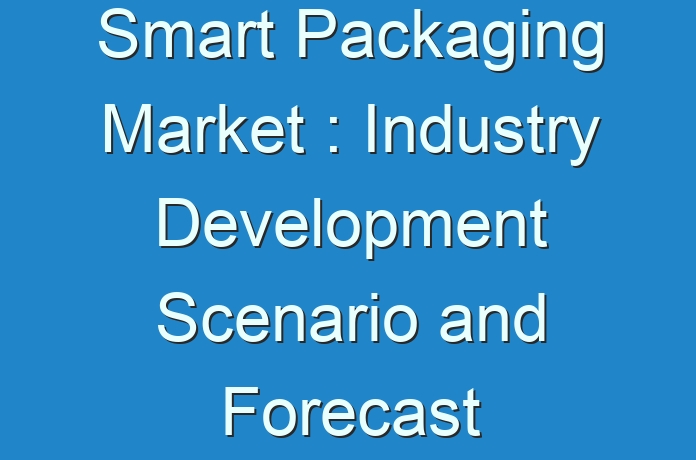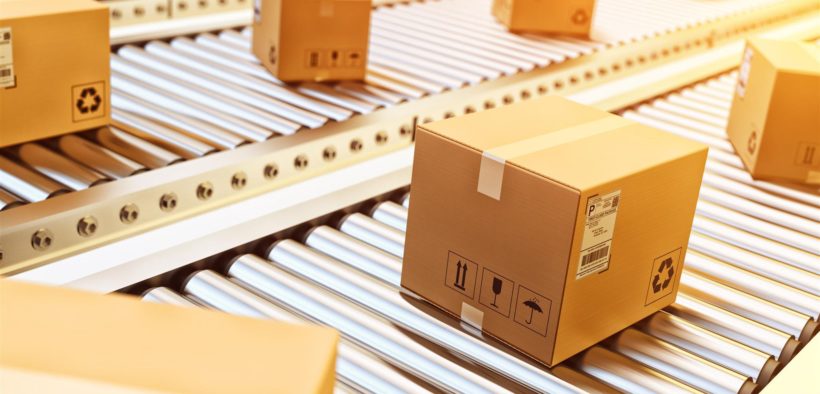
Smart packaging is an advanced form of packaging that provides additional functionalities such as extended shelf life, freshness monitoring and improved safety along with the traditional basic three functions of packaging that is protection, communication and containment. In addition, smart packaging are also used extensively by various end user segments in order to add value to their products, strengthen their brand image and to improve the consumer appeal. In a smart packaging, additive technologies including antimicrobials and oxygen scavengers are being added by various quality indicators that is majorly based on gas detection and temperature monitoring of the products for reducing food deterioration and contamination. Thus, smart packaging involves a combination of science, specialized materials and technology in order to provide advanced protection. The global smart packaging market is anticipated to experience an exponential growth during the forecast period from 2017 to 2025 owing to increasing demand of advanced packaging solution from various food processing and pharmaceutical sectors.
In order to provide a comprehensive and detailed analysis of the market, the global smart packaging market has been segmented on the basis of technology and end user. Different technology through which smart packaging enhances packaging functionality includes active packaging, intelligent packaging and modified atmosphere packaging (MAP) among others. Moreover, smart packaging also finds its application across various end user segments such as food and beverages, healthcare, personal care and others. The others segment includes application of smart packaging in consumer electronics and agricultural sectors. In addition, current market situation along with future anticipated growth trend of all the above mentioned segments including technology and end user across different regions including Europe, Asia Pacific, North America, Middle-East and Africa (MEA) and Latin America is also provided in this report.
Planning to lay down future strategy? Perfect your plan with our report sample here https://www.transparencymarketresearch.com/sample/sample.php?flag=S&rep_id=23516

Rising health consciousness among the consumers in one of the most important factor anticipated to trigger the demand of smart packaging during the forecast period from 2017 to 2025. In current generation (generation Y), consumers are becoming more health conscious. Toxic materials used in traditional packaging, especially food packaging is hazardous to consumer health. Consequently, consumers prefer smart packaging in order to have safe and hygienic products. In addition, changing lifestyle of the millennial population coupled with rising disposable income is also expected to boost the demand of smart packaging in the coming years. Owing to the cumulative effect of rising disposable income and busy lifestyle, consumers are inclining towards packaged foods that are easy to cook and are willing to pay additional price for packaging solution that increase the shelf life of the products and retain proper nutritional values. This in turn is expected to accelerate the adoption of smart packaging by various end user segments especially food and beverage industries and pharmaceutical sectors.
However, high price of smart packaging is one of the most important factor anticipated to hinder the commercial success of these products during the forecast period. Using smart packaging increase the price of the end products, which in turn is expected to affect its demand negatively.
Among the different technology used in smart packaging, the active packaging segment held the largest market share in 2016 and is anticipated to maintain its dominance during the forecast period. Increasing demand for packaging solution that is capable of sensing and manipulating the packaging environment to maintain the microbiological quality of the products is the primary factor attributed to this segment’s dominance.
Geographically, Europe generated the highest revenue in the smart packaging market in 2016 and is followed by North America. On the flip side, Asia Pacific region is predicted to experience the most promising growth during the forecast period. Increasing application of smart packaging across various logistics industry pertaining to the rising utilization of RFID (Radio Frequency Identification) tags at different levels in order to speed up the process of locating products and to facilitate the availability of various real time information is the most important factor anticipated to drive the demand of smart packaging in Asia Pacific region.
Some of the major players operating in the smart packaging market includes 3M (U.S.), PakSense (U.S.), BASF SE (Germany) and Huhtamaki Group (Finland) among others.
The report offers a comprehensive evaluation of the market. It does so via in-depth qualitative insights, historical data, and verifiable projections about market size. The projections featured in the report have been derived using proven research methodologies and assumptions. By doing so, the research report serves as a repository of analysis and information for every facet of the market, including but not limited to: Regional markets, technology, types, and applications.
Looking for exclusive market insights from business experts? Buy Now Report here https://www.transparencymarketresearch.com/checkout.php?rep_id=23516<ype=S
The study is a source of reliable data on:
- Market segments and sub-segments
- Market trends and dynamics
- Supply and demand
- Market size
- Current trends/opportunities/challenges
- Competitive landscape
- Technological breakthroughs
- Value chain and stakeholder analysis
The regional analysis covers:
- North America (U.S. and Canada)
- Latin America (Mexico, Brazil, Peru, Chile, and others)
- Western Europe (Germany, U.K., France, Spain, Italy, Nordic countries, Belgium, Netherlands, and Luxembourg)
- Eastern Europe (Poland and Russia)
- Asia Pacific (China, India, Japan, ASEAN, Australia, and New Zealand)
- Middle East and Africa (GCC, Southern Africa, and North Africa)
The report has been compiled through extensive primary research (through interviews, surveys, and observations of seasoned analysts) and secondary research (which entails reputable paid sources, trade journals, and industry body databases). The report also features a complete qualitative and quantitative assessment by analyzing data gathered from industry analysts and market participants across key points in the industry’s value chain.
A separate analysis of prevailing trends in the parent market, macro- and micro-economic indicators, and regulations and mandates is included under the purview of the study. By doing so, the report projects the attractiveness of each major segment over the forecast period.





